Transforming Customer Loyalty with Digital Brand Experiences
Why are brand experiences fundamental to cultivating customer loyalty and driving your business forward? This isn’t just about a product or service. It’s a comprehensive story each customer feels connected to, from the first point of contact to ongoing interactions. Simplify your journey through the complex landscape of digital customer relationships as we lay out actionable insights, examples from industry leaders, and strategies that align brand purpose with exceptional customer experiences to foster loyalty and competitive differentiation.
Key Takeaways
- Brand experience extends beyond user interaction with a product to include emotional connections and holistic perceptions, influenced by consistency and emotional engagement across all brand communication touchpoints.
- Personalization and real-time customer feedback are essential in refining brand experience strategies, with personalized communication and responses fostering better customer loyalty and satisfaction.
- The integration of digital dimensions into brand experiences, through technologies like virtual and augmented reality and strategic use of social media, plays a fundamental role in engaging customers and enhancing brand loyalty.
Exploring the Essence of Brand Experiences
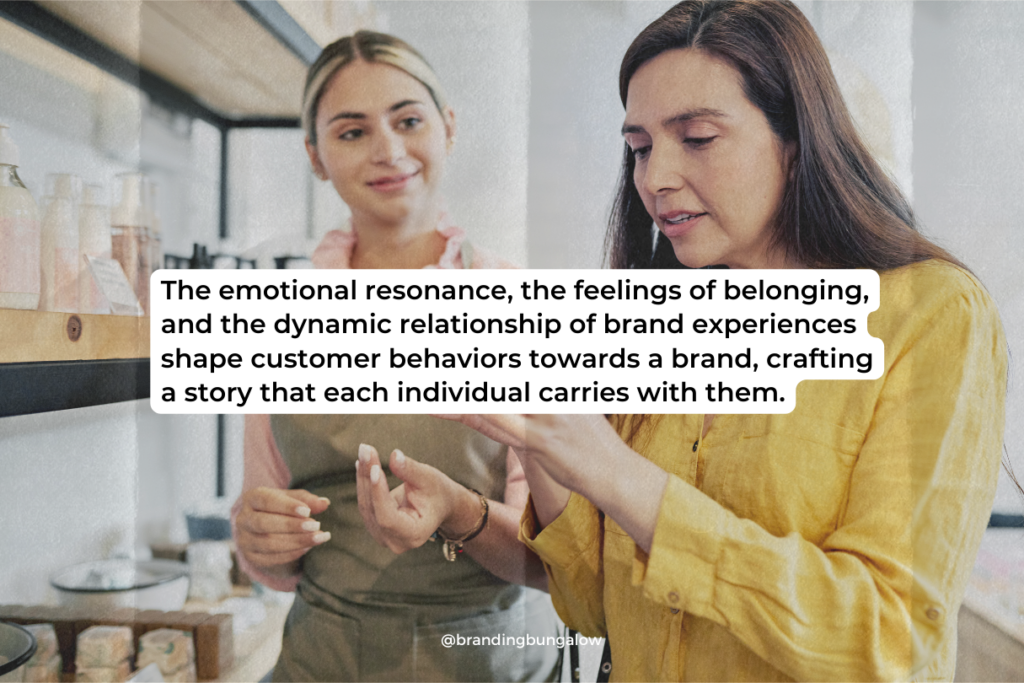
When exploring the essence of brand experiences, one uncovers a realm intertwined with emotional connections and holistic perceptions. Unlike the narrow focus of user experience on product interaction, brand experience casts a wider net. It encompasses every nuance from advertising to customer service. It’s the emotional resonance, the feelings of belonging, and the dynamic relationship that shape customer behaviors towards a brand. Thus, we craft a story that each individual carries with them.
Yet, the beauty lies in its sheer subjectivity; no two customers perceive a brand in the exact same light. Each interaction is a brushstroke on the canvas of customer perception, contributing to an entirely unique and personal brand narrative.
Crafting a Distinctive Brand Experience Strategy
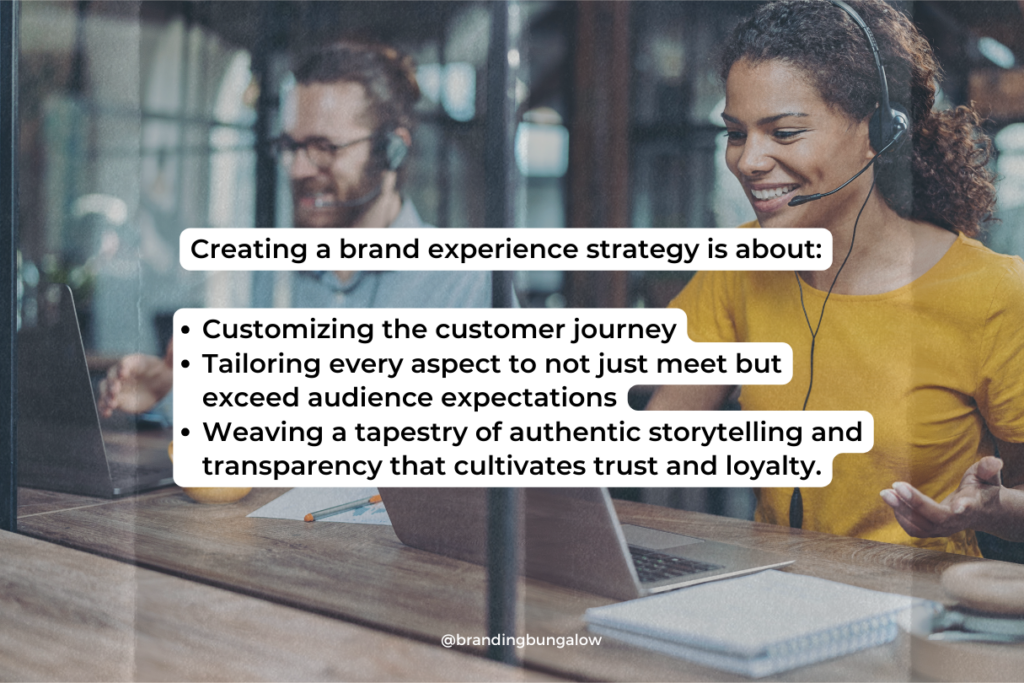
Creating a brand experience strategy that deeply connects with customers requires starting at the core by defining the brand’s unique purpose and values. It’s about:
- Customizing the customer journey
- Tailoring every aspect to not just meet but exceed audience expectations
- Weaving a tapestry of authentic storytelling and transparency that cultivates trust and loyalty.
The cornerstone of this strategy is consistency, harmonizing brand image, voice, and messaging across all touchpoints to uphold recognition and trust. Yet, like a living organism, a brand experience strategy must evolve. It should adapt to the ebbs and flows of customer feedback and market changes. This endeavor that calls for in-depth knowledge and the willingness to avoid complacency.
The Role of Consistency in Brand Experience
Consistency is the golden thread that binds the fabric of a cohesive brand experience. It ensures a unified journey for the customer. This harmony in experience solidifies brand recognition and fosters trust, as customers find comfort and reliability in the familiar cues of brand logos, colors, and messaging that they encounter across various touchpoints, ultimately providing a consistent brand experience.
It’s not just about visual aesthetics. Consistency in content and tone ensures that the brand’s story resonates across all channels, from advertising campaigns to customer service interactions. It shapes a dependable and engaging narrative that meets the audience’s needs while staying authentic to the brand’s roots.
Incorporating Emotional Engagement
A compelling brand experience is rooted in its capacity to stir emotions, forming enduring connections. When joy, trust, and admiration are part of the equation, customers are not just satisfied. They become champions of the brand, eager to share their positive experiences and endorse it to others.
Through the art of storytelling and genuine connections, brands can share their values and mission, bringing customers on a journey that feels personal and authentic. Engagement that instills a sense of ownership and involvement only serves to strengthen this bond. It thus converts satisfied customers into enthusiastic brand ambassadors.
Personalization as a Strategy Cornerstone
Personalization in today’s digital landscape is more than just a preference; it’s a demand. With 62% of consumers desiring tailored messages, failing to personalize can lead to lost opportunities. By fine-tuning brand experiences to align with individual preferences and behaviors, companies can create a sense of personal connection that enhances loyalty and sales.
From targeted emails celebrating customer milestones to category-specific discounts, personalization makes each interaction feel exclusive and valued. It dramatically improves engagement metrics like open and click-through rates. Leveraging automated tools for personalized notifications and recommendations ensures that this tailored approach is consistently applied across customer touchpoints. Doing so maintains relevance and enhancing the overall experience.
The Interplay Between Brand Experience and Customer Satisfaction
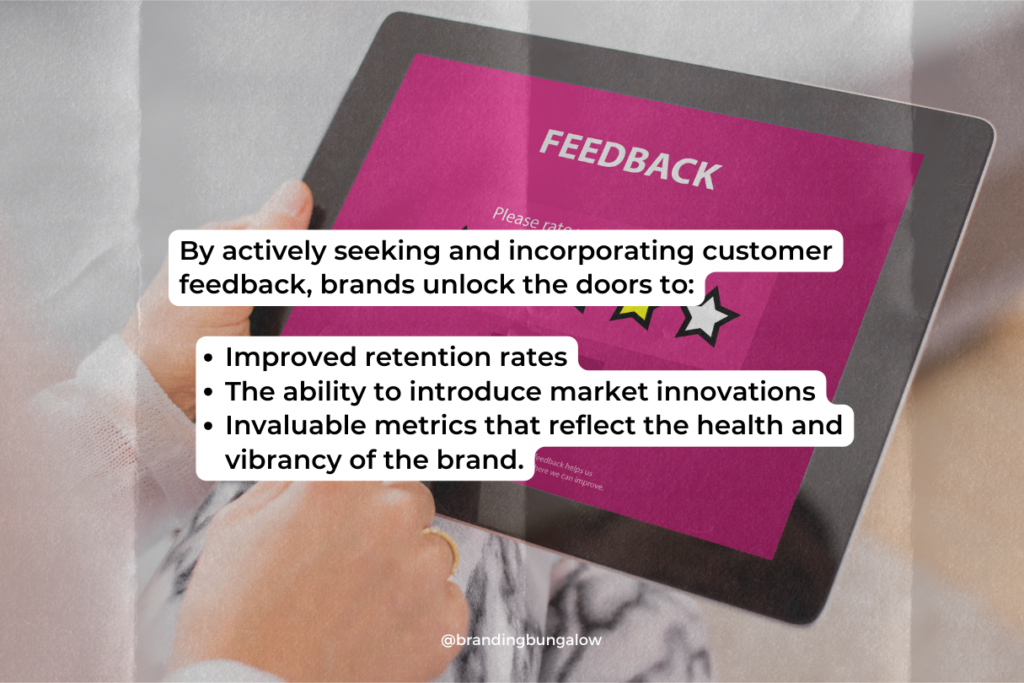
The magic of brand experience changes customer satisfaction into a powerful driver for brand growth. Positive encounters with a brand foster emotional connections that elevate both awareness and loyalty, influencing behaviors and driving purchases. As the positive brand experience ascends, so does the perceived value of the products, creating a virtuous cycle of growth and innovation.
By actively seeking and incorporating customer feedback, brands unlock the doors to:
- Improved retention rates
- The ability to introduce market innovations
- Invaluable metrics such as Net Promoter Score (NPS) and Customer Satisfaction (CSAT) that reflect the health and vibrancy of the brand.
Leveraging Customer Feedback for Unbeatable Brand Experiences

Customer feedback serves as the compass directing the journey of brand experience, offering vital insights for continuous refinement. By harnessing the power of social listening and Net Promoter Score (NPS), brands glean accurate and representative insights that inform strategy and enhance perception.
Feedback surveys tailored to previous interactions with the brand:
- Resonate with the customer
- Lay the groundwork for a response plan that is both solid and agile
- Allow for ongoing improvement and alignment with customer expectations.
Real-time Insights from Customer Data
In the digital age, real-time is the new currency. Customer feedback that flows in live can pinpoint areas for quick improvement. That way, brands can resolve issues that testing may have missed and enhance website functionality. High response rates to surveys gather useful data while also signaling the effectiveness of marketing efforts, informing strategies that contribute to profitable growth.
Engaging with customers on social platforms and leveraging their comments not only enhances public perception but also showcases a brand’s commitment to responsiveness and customer care.
From Feedback to Action
Customer feedback propels the refinement of the brand experience. By training support teams and finetuning chatbots based on this feedback, brands offer superior assistance that elevates the customer journey. The transformative power of feedback can:
- Turn satisfied customers into vocal brand advocates
- Encourage customers to share their positive experiences
- Organically promote the brand through reviews and social media.
Effective monitoring and auditing of brand touchpoints ensure that inconsistencies are identified and addressed. Doing so leads to an enriched and seamless brand experience.
The Digital Dimension of Brand Experiences
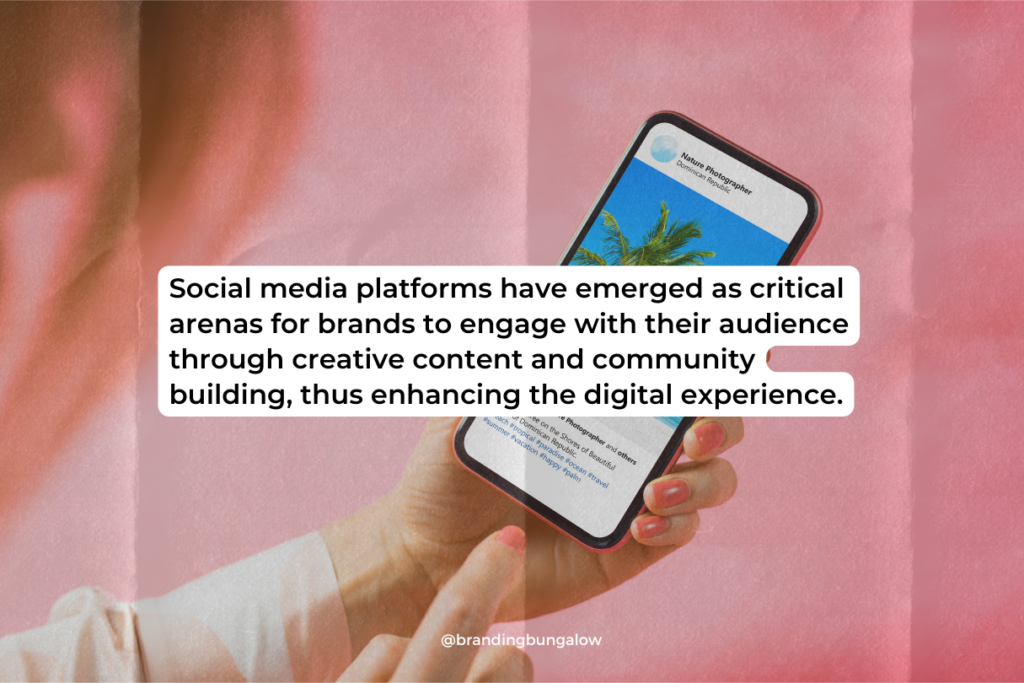
The digital landscape presents a myriad of opportunities for brands to craft enduring experiences. Key factors include digital marketing, product presentation, and customer service. Each factor plays a distinct role in sculpting the digital brand experience. A unified online identity and narrative are paramount for a positive brand perception, while disconnected tech stacks can hinder brand activation and optimization processes.
Technologies such as virtual and augmented reality are redefining experiential marketing. They offer immersive experiences that deepen consumer connections and create memorable interactions. Social media platforms have emerged as critical arenas for brands to engage with their audience through creative content and community building, thus enhancing the digital experience.
Enhancing Online Customer Interaction
The digital domain offers brands a canvas to paint engaging and immersive experiences. Companies are crafting virtual environments and interactive narratives that not only engage but captivate customers, offering them a role in the brand’s story. Personalized digital content strikes a chord with the audience, deepening online interactions and fostering a connection that transcends mere transactions.
This approach attracts prospective customers while also reinforcing the bond with existing ones. With it, brands enhance loyalty and pave the way for customer acquisition and retention.
The Impact of Social Media Presence
Social media’s influence on brand experience is profound and far-reaching. Feedback from customers on these platforms builds social proof, strengthening the brand’s reputation and attracting new customers. Reviews can tip the scales of perception, swaying potential customers to become loyal followers of the brand.
When brand experiences are so impactful that they spur social media sharing, the result is an amplified brand visibility and a surge in consumer engagement that solidifies a loyal customer base.
Building Loyalty Through Brand Experience
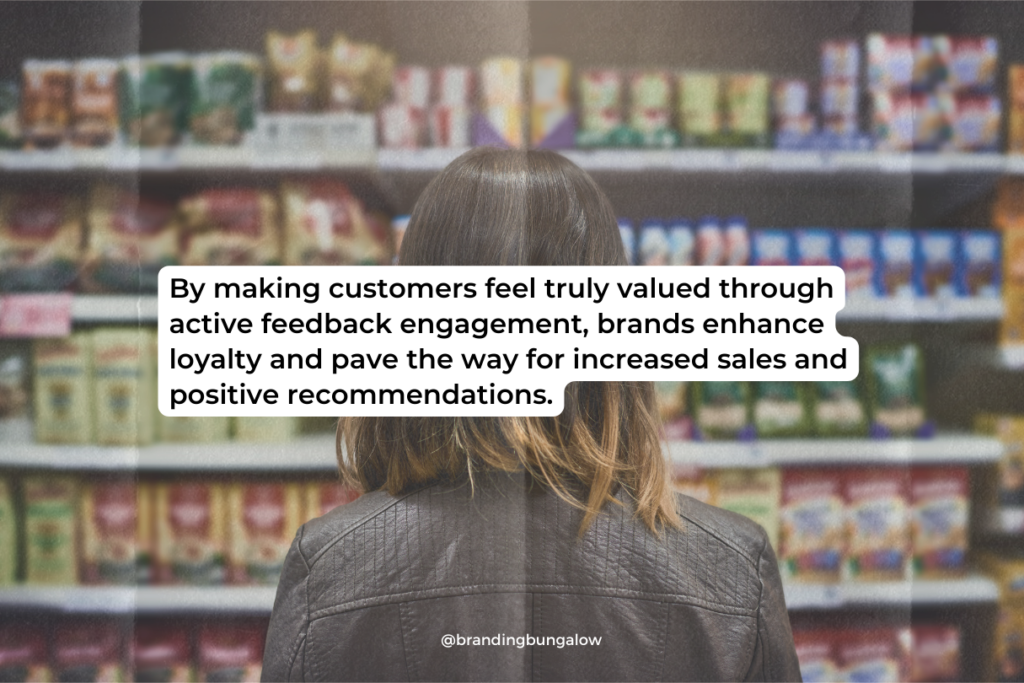
Brand loyalty is not achieved overnight. It builds over time through consistent positive interactions that connect the customer with the brand. From exceptional customer care to engaging brand narratives, unique experiences capture the customer’s attention and foster an authentic relationship that translates into elevated customer experience and loyalty.
These experiences foster emotional connections that not only increase awareness but also influence customer behavior to drive repeat purchases and revenue growth. Brands can enhance loyalty and pave the way for increased sales and positive recommendations. All they need is to make customers feel truly valued through active feedback engagement. The metrics that reflect brand equity, such as loyalty, NPS, and perceived quality, are testament to the brand’s market value, built and nurtured through consumer experiences.
Brand Experience Examples: Lessons from Leading Brands
Leading brands offer a blueprint for success. They demonstrate the undeniable power of unique brand experiences in building customer loyalty and differentiating in the market. Some examples include:
- Starbucks: Brews a loyal customer base through its high-quality coffee and inviting atmosphere. A loyalty program that rewards customers and enhances their experience complements these factors.
- Disney: Provides an unparalleled brand experience that extends from its films to its theme parks. It weaves a magical narrative that captivates and delights customers of all ages.
- Tesla: Focuses on innovation and sustainable electric vehicles, coupled with exceptional service and a dedicated Supercharger network, highlighting a brand experience driven by forward-thinking and convenience.
- Apple: Its commitment to innovation and customer education through its products and stores fosters a brand experience that is both educational and memorable.
- Nike: Inspires with marketing narratives and store designs that celebrate athletes and empower customers. Creates an experience that is both personal and motivating.
These brands showcase the importance of creating memorable and engaging experiences for customers, emphasizing the value of effective brand experience management.
Overcoming Obstacles in Brand Experience Delivery
Providing a flawless brand experience is much like navigating through a complicated maze. Numerous challenges must be surmounted for success. The impact of brand experience on customer trust, loyalty, and relevance cannot be overstated. It encompasses all interactions and media touchpoints.
Brands must navigate the intricate landscape of data privacy and consumer consent, ensuring that their practices comply with regulations to avoid compromising the brand experience. Additionally, maintaining a brand’s reputation on social platforms requires effective crisis management and swift action to address any negative feedback that could tarnish customer perception.
Addressing Inconsistencies Across Touchpoints
In the quest to deliver a seamless brand experience, addressing inconsistencies across various channels is paramount. Adapting brand experiences to different channel properties and formats is a challenge that brands must meet head-on to maintain a unified brand experience.
A comprehensive brand style guide is an indispensable tool in this endeavor. It ensures that all communication channels are aligned and consistent, thus reinforcing the brand’s image and message.
Meeting and Exceeding Expectations

The cornerstone of customer satisfaction is meeting, and where possible, exceeding expectations. Achieving this is crucial for fostering loyalty and advocacy, as customers who feel their needs and desires are understood and valued are more likely to remain loyal and recommend the brand to others.
By consistently delivering on promises and going above and beyond, brands not only satisfy customers but also inspire them to become vocal supporters, furthering the brand’s reach and impact.
Amplifying Brand Visibility Through Strategic Marketing Campaigns
Strategic marketing campaigns serve as the beacon that highlights a brand’s presence, attracting the target audience and forging a lasting connection. Being visible where the audience congregates is pivotal; it’s a strategic move that can lead to 40% of consumers preferring one brand over another. To differentiate and gain a competitive edge, creating unforgettable moments and fostering emotional connections are essential. These moments resonate with customers and linger in their memory, influencing their choice and loyalty. A well-executed brand strategy plays a crucial role in achieving this goal.
Retail media networks, such as those operated by Amazon, Walmart, Target, and Kroger, provide brands with the opportunity to reach vast audiences. Through these networks, targeted campaigns enhance the shopping experience and drive sales, leveraging customer data to maximize the relevance and impact of each interaction. Adtech partners play a critical role in managing these campaigns, ensuring that the brand’s marketing communications are optimized, and the return on investment is maximized.
Some key benefits of retail media networks include:
- Increased market visibility
- Enhanced customer targeting
- Improved campaign performance tracking
- Competitive analysis and benchmarking
By utilizing these networks and working with adtech partners, brands can effectively reach their target audience and achieve their marketing goals.
Measuring the Impact: Brand Experience Data and Metrics
To ensure that brand experiences keep resonating with consumers, it’s crucial to adopt a rigorous approach towards evaluating and refining strategies. This process relies on leveraging customer feedback and a suite of relevant metrics to stay aligned with the ever-changing tides of market and consumer dynamics. Regular data collection, at least monthly, is crucial for timely adaptation to shifting customer expectations and market trends.
Following thorough analysis, these insights must be swiftly incorporated into the brand’s strategy, optimizing customer experiences and enhancing the brand’s long-term resilience. Monitoring brand performance through metrics such as:
- awareness
- perception
- purchase intent
- market share
provides a comprehensive view of the brand’s strength and consumer behavior. Brand consideration is gauged through survey responses and social media mentions, which signal the brand’s position in the consumer purchase journey.
Furthermore, metrics like NPS, CSAT, brand sentiment, and attributes are instrumental in measuring public attitudes towards a brand, reflecting its reputation and emotional appeal. Quantifying the financial returns from brand activations is challenging, yet it’s critical for informing budget allocations for future initiatives and sustaining brand health.
Summary
In the dance of digital dynamics, mastering the art of brand experience is the key to unlocking the treasure trove of customer loyalty and market differentiation. From the initial spark of a cohesive brand strategy to the continuous glow of customer satisfaction and loyalty, brands that invest in creating unforgettable experiences command the stage. Through strategic marketing campaigns, real-time insights, and a commitment to personalization and consistency, brands can choreograph a performance that captivates their audience. By measuring the impact with meticulous data and metrics, brands refine their movements, ensuring they remain in harmony with the evolving desires of their customers. Let us take these lessons and weave them into the fabric of our own brand stories, creating experiences that not only endure but also enchant.
Frequently Asked Questions
What distinguishes brand experience from user experience?
Brand experience is shaped by every interaction with a brand, including advertising and customer service, while user experience is limited to product interaction only.
How can consistency across touchpoints enhance brand experience?
Consistency across touchpoints, including brand image, voice, and messaging, provides a unified and cohesive brand experience that reinforces brand recognition and trust. This enhances the overall customer experience and loyalty.
Why is personalization important in brand experience strategies?
Personalization is important in brand experience strategies because it creates tailored experiences that enhance customer loyalty and sales, making interactions feel more unique and valued.
How do social media platforms impact brand experience?
Social media platforms impact brand experience by enabling customer interaction, creative content engagement, community building, and increased brand visibility, thus enhancing the overall digital brand experience.
What metrics are used to measure the impact of brand experience?
We measure brand experience impact using metrics like brand awareness, perception, purchase intent, customer loyalty, NPS, and CSAT. These metrics reflect long-term brand strength and consumer behavior.
Recent Blog Entries
Discounts to Dubsado CRM, Helcim Payment Processing and...
Brand audits can save your business' sinking marketing ship.
What's happening to Coke and what you can learn from it.
Shop Products
Create a personalize brand board by taking elements from our 3 signature brand board templates.